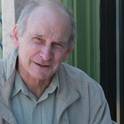
Article
Why people walk: modeling foundational and higher order needs based on latent structure
Journal of Urbanism: International Research on Placemaking and Urban Sustainability
(2017)
Abstract
Researchers are probing motivational factors influencing individuals’ choice to walk. A review of the literature reveals a great deal of variability in the motivators considered. This study identified 15 motivators commonly associated with walkability for use in a pedestrian-intercept survey to measure their influence on pedestrian mode choice to walk in the Mount Pleasant neighborhood of Vancouver, Canada. The results were analyzed using analytical factor analysis and indicated a hierarchical needs model with four significant factors including lower order (urban planning and policy) and higher order (physical geographic; attractiveness and sociability; and personal) needs considered in their decision. The study suggests that lower order factors, which correspond to the 4 Es of pedestrian planning, provide a foundation for encouraging walking, but in order to achieve high levels of walking, it is necessary to adequately address factors related to higher order needs that are often beyond the attention of pedestrian planning.
Keywords
- Pedestrian transportation,
- walkability,
- alternate transportation,
- pedestrian motivators,
- hierarchical needs modeling,
- analytical factor analysis
Disciplines
Publication Date
2017
DOI
10.1080/17549175.2016.1223738
Publisher Statement
Copyright © 2018 Informa UK Limited
Citation Information
Patrick Buckley, Paul Stangl and Jeff Guinn. "Why people walk: modeling foundational and higher order needs based on latent structure" Journal of Urbanism: International Research on Placemaking and Urban Sustainability Vol. 10 Iss. 2 (2017) p. 129 - 149 Available at: http://works.bepress.com/patrick-buckley/7/
